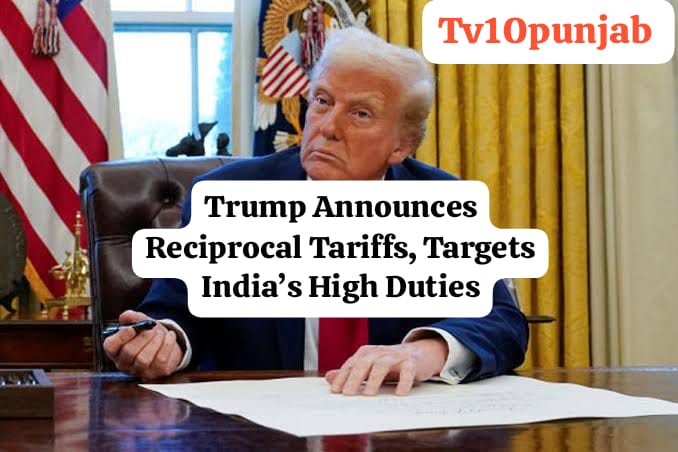National/ International/ Business Desk
14 February
Ludhiana
Sandeep Dhand
US President Donald Trump has announced that his administration will impose “reciprocal tariffs” on trading partners, signaling a new phase in the ongoing global trade war. While signing an executive order, Trump specifically pointed to India, saying it has the highest tariffs among all countries.
The announcement comes just ahead of his meeting with Indian Prime Minister Narendra Modi. Trump emphasized that these new tariffs would apply to all countries, including US allies. Speaking in the Oval Office, he criticized America’s trade partners, claiming that even friendly nations often have worse trade policies than US adversaries.

During his election campaign, Trump had promised, “An eye for an eye, a tariff for a tariff, the same amount.” This means that if a country, like India, imposes a 25 percent tariff on American automobiles, the US would respond with the same 25 percent tariff on vehicle imports from that country.
A recent report by Nomura explained that these tariffs could be adjusted based on additional non-tariff factors, such as regulations and trade barriers. However, Trump’s stance suggests a more aggressive approach to balancing trade relationships.
India and the US have had trade tensions in the past, with Washington frequently criticizing New Delhi’s import duties on American products. In 2019, Trump revoked India’s preferential trade status under the Generalized System of Preferences (GSP), citing unfair trade practices.
As Trump pushes ahead with his tariff plan, it remains to be seen how India and other nations respond. With Modi’s upcoming meeting with Trump, trade is expected to be a key discussion point, potentially shaping the future of US-India economic ties.
